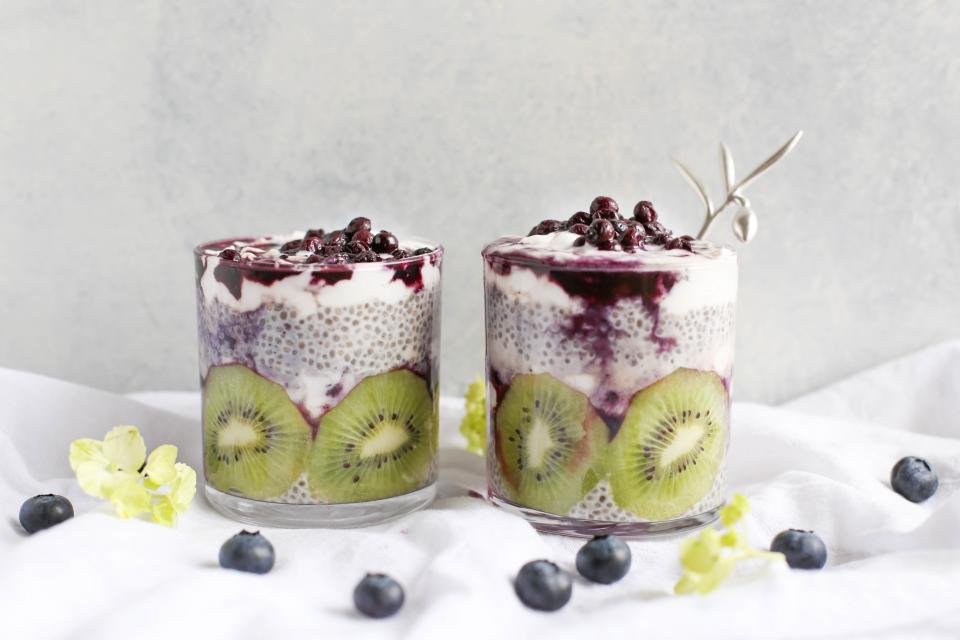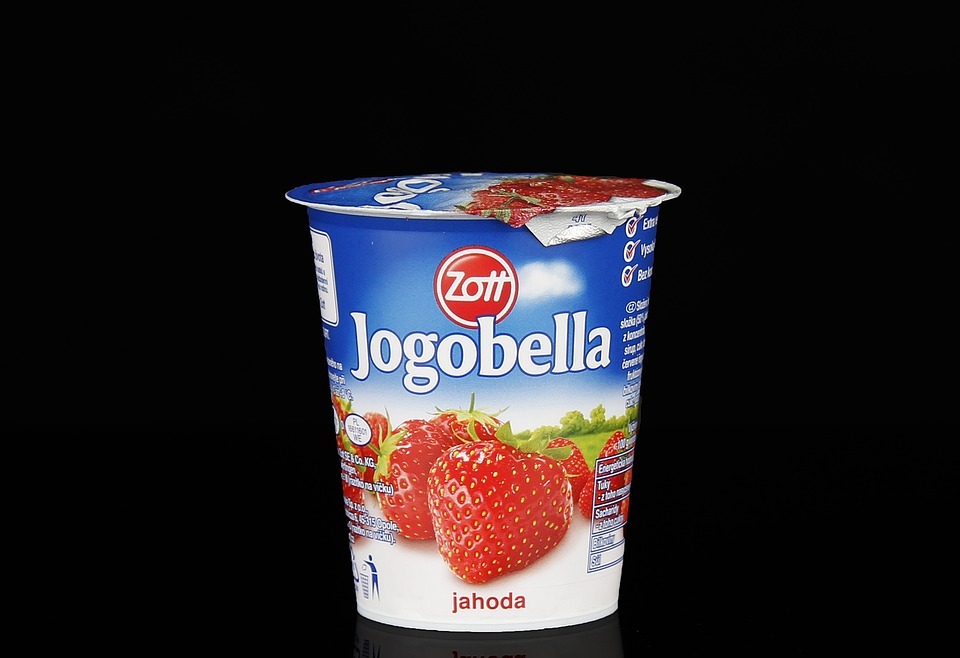This article delves into the question of whether cats can safely consume yogurt. We'll explore the potential benefits and risks associated with yogurt consumption for felines, examining the different types of yogurt available, and providing guidance on how to introduce yogurt to your cat, if at all. We'll also address common concerns and offer alternative treats for your furry friend.
Part 1: Yogurt and Cats - A Closer Look

1.1. The Allure of Yogurt for Cats
Many cat owners are drawn to the idea of offering their feline companions yogurt, often due to its perceived health benefits for humans. The creamy texture and tangy flavour can indeed be appealing to some cats, but it's crucial to understand the potential implications for their health before making yogurt a part of their diet.
1.2. The Nutritional Value of Yogurt
Yogurt, particularly Greek yogurt, is known for its nutritional value, containing:
- Calcium: Essential for strong bones and teeth. While cats can obtain calcium from meat and fish, some sources suggest yogurt could be a supplemental source.
- Protein: Important for muscle growth and repair. Cats require high-protein diets, and yogurt can provide a small source of this essential nutrient.
- Probiotics: Beneficial bacteria that can aid digestion. Probiotics in yogurt can support a healthy gut microbiome, which is particularly relevant for cats with digestive sensitivities.
- Vitamin B12: Crucial for energy production. Cats primarily obtain vitamin B12 from meat, and while yogurt contains some, it's not a significant source.
- Potassium: Helps regulate blood pressure. While cats need potassium, it's readily available in their meat-based diets.
1.3. The Potential Benefits of Yogurt for Cats
While cats don't necessarily require the same nutritional components as humans, there are some potential benefits that yogurt could offer:
- Improved Digestion: Probiotics in yogurt can help maintain a healthy gut microbiome, potentially easing digestive issues, especially in cats with sensitive stomachs.
- Enhanced Immune Function: Some studies suggest probiotics may support the immune system in cats, though more research is needed in this area.
- Weight Management: Yogurt can be a low-calorie alternative to high-fat treats, but it should not be considered a primary weight management tool.
Part 2: The Risks of Yogurt for Cats

2.1. Lactose Intolerance: A Major Hurdle
Cats are lactose intolerant, meaning they lack the enzyme lactase needed to digest lactose, the sugar found in dairy products. This can lead to:
- Diarrhea: The most common symptom, caused by the undigested lactose fermenting in the gut, resulting in watery stools.
- Vomiting: May occur if the cat consumes a significant amount of lactose, as their bodies struggle to process it.
- Stomach Upset: General discomfort and pain in the digestive tract, including gas and bloating.
2.2. Potential for Pancreatitis: A Serious Concern
Yogurt, especially full-fat varieties, can be high in fat. Excessive fat intake can trigger pancreatitis, a serious inflammation of the pancreas, in cats. Pancreatitis can be life-threatening and requires immediate veterinary attention.
2.3. Nutritional Imbalances: The Risk of Deficiencies
Cats have specific nutritional requirements, and relying solely on yogurt as a food source can lead to deficiencies in essential nutrients like taurine, arachidonic acid, and other vital components found in meat-based diets.
2.4. Potential for Allergies: A Rare but Real Threat
While uncommon, some cats are allergic to dairy products, which can cause a variety of symptoms, including skin irritation, vomiting, and diarrhoea.
Part 3: Types of Yogurt and Their Suitability for Cats

3.1. Plain, Unsweetened Yogurt: The Safest Option
Plain, unsweetened yogurt is generally the safest option for cats, as it contains the least amount of added sugar and flavourings. However, even plain yogurt still contains lactose, so moderation is key.
3.2. Flavoured Yogurt: A No-Go Zone
Flavoured yogurts often contain sweeteners, artificial colours, and preservatives that can be harmful to cats. These additives can cause digestive upset and potentially lead to other health issues.
3.3. Greek Yogurt: A Potential Alternative
Greek yogurt is a good source of protein and probiotics, but it's essential to choose plain, unsweetened varieties. It's crucial to note that Greek yogurt still contains lactose, so it's not a suitable substitute for a complete cat diet.
3.4. Goat's Milk Yogurt: A Misconception
While goat's milk is sometimes touted as easier to digest for lactose-intolerant individuals, it still contains lactose and should be avoided in cats.
Part 4: Introducing Yogurt to Your Cat
4.1. Consult Your Veterinarian: The First Step
Before introducing yogurt to your cat, it's crucial to consult your veterinarian. They can advise on the appropriateness of yogurt for your cat's specific health needs and any potential risks. Factors like age, breed, and any existing health conditions will be considered.
4.2. Start Slowly: Gradual Introduction is Key
If your vet approves, introduce yogurt gradually, starting with a tiny amount (e.g., a teaspoon) and monitoring for any adverse reactions. Introduce it as a separate treat rather than mixing it with their regular food.
4.3. Observe for Signs of Intolerance: Watch for Warning Signs
Watch for signs of lactose intolerance, such as diarrhoea, vomiting, or stomach upset. If you notice any of these symptoms, discontinue feeding yogurt immediately.
4.4. Choose Plain, Unsweetened Yogurt: Simplicity is Best
Stick to plain, unsweetened yogurt, as flavoured varieties can contain harmful additives.
Part 5: Alternatives to Yogurt for Cats
If your cat is lactose intolerant or your vet advises against yogurt, there are other healthy and palatable alternatives:
- Meat-based treats: Choose high-quality, low-fat options, such as cooked chicken, turkey, or lean beef, cut into small pieces.
- Catnip: A safe and natural treat that many cats enjoy. It can provide a stimulating and enjoyable experience for your feline companion.
- Homemade cat food: Prepare a balanced and nutritious diet under your vet's guidance. This can be a good option for cats with specific dietary needs.
- Commercial cat food: Choose a high-quality, complete and balanced diet formulated for cats. This should be the cornerstone of your cat's nutrition.
- Special cat treats: Look for commercially available treats designed specifically for cats, which are formulated to meet their nutritional requirements.
Part 6: FAQs
6.1. Can kittens eat yogurt?
It's generally not recommended to feed yogurt to kittens due to their delicate digestive systems and increased risk of lactose intolerance.
6.2. How much yogurt can a cat eat?
If your vet approves yogurt for your cat, start with a tiny amount (e.g., a teaspoon) and gradually increase it, monitoring for any adverse reactions. It's important to remember that yogurt should be a rare treat, not a staple in their diet.
6.3. Can I give my cat yogurt every day?
It's best to avoid feeding yogurt daily to cats. Occasional treats are acceptable, but a balanced diet is essential.
6.4. What if my cat eats yogurt and has diarrhoea?
If your cat experiences diarrhoea after consuming yogurt, discontinue feeding it immediately. Consult your veterinarian for advice on managing the diarrhoea.
6.5. Can I add yogurt to my cat's food?
It's generally not recommended to add yogurt to your cat's food, as it can disrupt the balance of nutrients in their diet.
6.6. What are some signs of lactose intolerance in cats?
Besides diarrhoea, other common signs of lactose intolerance in cats include vomiting, gas, bloating, and stomach discomfort.
6.7. Are there any alternatives to yogurt that contain probiotics?
Yes, there are cat-specific probiotic supplements available on the market that can be a safer option than yogurt.
Everyone is watching
-

Are Cat Ribs Flexible? Understanding Their Anatomy
CATS & KITTENSThis article delves into the fascinating world of feline anatomy, exploring the flexibility of cat ribs and ho...
-

Can Cats Eat Bananas? (Everything You Need to Know)
CATS & KITTENSThis article dives into the intriguing question of whether cats can safely enjoy the sweet, yellow fruit, bana...
-

Cat Lifespan: How Long Do Cats Live?
CATS & KITTENSThis comprehensive guide explores the factors influencing the lifespan of our feline companions, providing ins...
-

Can Cats Get COVID-19? What You Need to Know
CATS & KITTENSThis article will delve into the fascinating world of feline COVID-19 susceptibility. We'll explore whether ca...
-

Can Cats Eat Eggs? A Complete Guide to Egg Safety for Your Feline Friend
CATS & KITTENSWhen it comes to treating our furry companions, we all want to ensure we're doing what's best for them. Eggs...
